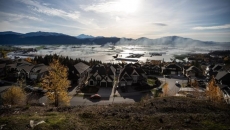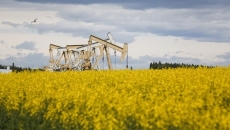"First and foremost, there will be no curbing of inflation unless the Bank of Canada reverses its ultra-loose monetary policy, as is widely expected this year.”- Doug Porter, Chief Economist BMO
1. Tell us about yourself and the work that you do?
I have been an economist, working on Bay Street in Toronto, since the early 1980s. I now lead a team that provides analysis and forecasts on numerous economic and financial indicators, such as interest rates, economic growth, unemployment, housing, exchange rates, and, of course, inflation. Our work is aimed at both supporting the Bank in its planning, but also our customers and clients. Besides producing publications and managing my group, much of my time is also spent presenting our views to a wide variety of audiences, including governments, non-profits, and business associations. Prior to the pandemic, almost half of my time may have been spent on the road, visiting clients or giving presentations; I still give as many presentations now, but they of course have all been virtual in the past two years.
2. Inflation in Canada hit a 30-year high at the end of 2021. What has been the cause of this, and how concerned should we be?
There are several causes behind the rise in inflation, which makes it more of a challenge to address. First, the pandemic disrupted the global supply-chain network, raising costs and creating product shortages. The most prominent example is the microchip shortage that has led to a dearth of new vehicles, resulting in soaring prices for both new and, especially, used cars. Second, commodity prices bolted higher in the past two years, notably for energy, lumber, base metals and agriculture. Much of the increase in raw material costs is passed along to customers. And third, ultra-loose monetary and fiscal policies generated overly-strong demand, especially for durable goods given COVID-related restrictions on some services. The strong demand put even more pressure on producers who couldn’t keep up, resulting in higher prices. We are very concerned about the outlook for inflation, given how late (in our view) central banks are in reversing their stimulative policies (the Fed is still buying assets!). Given the relatively slow effect of rate increases on demand, we could well see more persistence in inflation, especially if wage costs accelerate in response to tight labour markets in the U.S. and Canada.
3. Will we see a domino effect of inflation in all sectors of the economy or will the focus be on a steep rise in gasoline and food over any other sphere?
We expect gasoline prices to eventually ease later this year given our forecast of lower oil prices, though the upward trend in food costs will likely see more persistence due to the effects of last year’s severe drought in the North American Midwest. While some cooling in the housing market (in response to interest rate hikes) will take pressure off homeowners’ replacement costs in the CPI, the decline in affordability across much of the country will also drive up rents. Most sectors will face upward pressure from expected higher wages this year, especially labour-intensive services industries. However, the price of some goods that have jumped in the past year—autos, furniture, appliances—could pull back due to a shift in demand toward services and owing to rising interest rates, which will curb demand for interest-sensitive big-ticket items. In addition, some easing in the microchip shortage should support auto production, allowing for some retreat in soaring car prices.
4. Do you expect the The Bank of Canada to raise interest rates, and what is your prediction as to what the new rate might be?
The Bank of Canada will almost certainly begin raising interest rates very soon. We see them raising interest rates at its March 2022 meeting, after signaling its intention to do so in January. Rates hikes of 25 bps (1/4 percentage point) are expected four times in 2022, followed by at least another two rate increases in 2023. That would take the policy rate to 1.75% (from 0.25% now), levels seen at the end of the last economic cycle. Given the inflation backdrop, the risk is that the Bank enacts these rate hikes more quickly, and ultimately reaches a higher end point.
5. Is it fair to say that the latest readings may stir concerns within the Bank of Canada about how long inflation rates remain elevated, as well as a broadening of price pressures outside of supply-constrained items?
Yes. The Bank of Canada is likely concerned about more persistent inflation, broadening pressure, and entrenching expectations. Their latest Business Outlook Survey showed 67% of firms expect inflation above 3% over the next two years, the highest since survey data began in 2001. The share of firms planning wage increases is also at a record high, as firms seek to retain and attract scarce labour. The Bank of Canada understands that the longer this pressure is allowed to make its way into wage settlements and pricing decisions, the more entrenched inflation pressure will become.
6. If the interest rate goes up what does this mean for the already hot and unaffordable housing market?
Higher interest rates will apply some pressure to already-stretched home prices. After accounting for the average home price, household income and current mortgage rates, Canadian home prices are the most expensive they have been since the late-1980s. During the second half of 2021, many buyers switched to lower-cost variable-rate mortgages, which helped keep home price momentum running strong. But, as the Bank of Canada raises interest rates and variable mortgage rates climb, that option will disappear, and the market will be forced to deal with higher interest rates. Strong wage, employment conditions and demographic demand patterns will prevent a major decline in home prices, but we could see a stalling or slight correction as the market adjusts to higher interest rates.
7. Will we see the economy recover even amid labour shortages?
If labour availability remains limited, either because of the pandemic or longer-term structural changes in worker participation, it will act as constraint on growth and apply upward pressure to inflation. In its simplest form, an economy can grow by either having more people producing (the labour force), or each person producing more output (productivity), or a combination of the two. Unless productivity can improve, labour shortages will restrict the economy’s ability to grow. At the same time, limited labour supply will increase competition for workers and drive wage growth higher, adding to the inflation backdrop. Longer-term, scarce labour could redirect more business capital to machinery and equipment spending with an eye on increasing productivity, but that takes time.
8. What is the strategy of Canadian banks and the government to curb the rise in inflation?
First and foremost, there will be no curbing of inflation unless the Bank of Canada reverses its ultra-loose monetary policy, as is widely expected this year. Unfortunately, from an inflation perspective, there is little indication that the federal government will rein in planned spending increases in coming years. Like most businesses, Canadian banks will try to deal with high inflation by continuing to invest in productivity-enhancing technologies to limit any cost increases for their clients.
9. What reassurance can banks provide to their clients during such trying times?
Three things. First, because the Bank of Canada is mandated to achieve 2% inflation, it eventually will return inflation to its target, as was the case for most of the previous quarter century. Second, because interest rates are rising, households need to get their finances in order, perhaps by repaying debt, and certainly by not stretching beyond their means at this stage of the cycle. Locking in debt at today’s still-low levels may also be a wise choice for households that would be severely strained if interest rates rose too much. And third, households will need to reexamine their budget, and look to cut back on items that are rising sharply in price while switching to items that are either holding steady or even becoming cheaper. For example, forgoing or delaying that new sports vehicle or potential trip abroad (when we are able to travel again).
10. What’s a message you would like to share with our readers?
When I first started in the economics business, consumer-price inflation in Canada was above 10%, but within a year it had been cut in half. The point is that just as the inflation squall has picked up quickly in the past year, it can also pass quickly if the appropriate steps are taken soon, and some of the supply chain issues improve. The main message is that the current hot readings may not last long, and I believe we should stay relatively optimistic about the future, even if the road is a bit bumpy in coming months on the inflation front.





